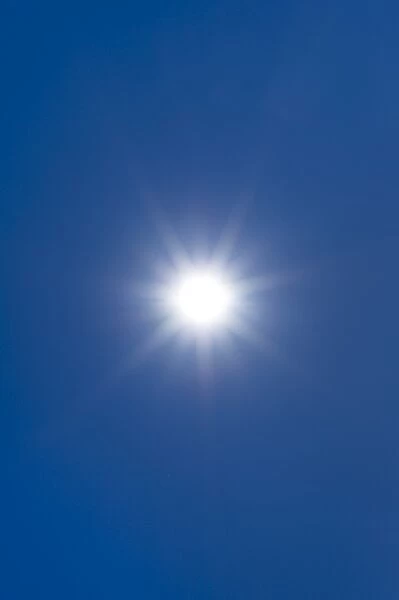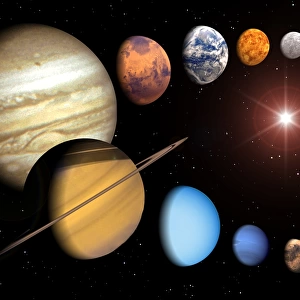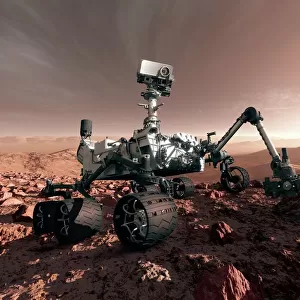Home > Science > Space Exploration > Planets > Neptune
Venus transiting the Sun, telescope image
![]()

Wall Art and Photo Gifts from Science Photo Library
Venus transiting the Sun, telescope image
Gliese 436b is a mid-sized exoplanet roughly the size of Neptune in our own Solar System. It orbits its parent star, the red dwarf Gliese 436, at an extremely close-in distance of just 0.03 astronomical units, taking 2.64 days to go around once. By contrast, Mercury orbits at more than 10 times this distance from the Sun and takes 88 days. Gliese 436b was found using the transit method of discovery, whereby the planet -- as seen from the Earth -- passes first in front of and then behind its parent star. During these events, called transits, the brightness of the system is modulated, enabling astronomers to infer the presence of a planet and calculate its orbital period and mass using the laws of motion
Science Photo Library features Science and Medical images including photos and illustrations
Media ID 9218131
© DAVID NUNUK/SCIENCE PHOTO LIBRARY
Blue Sky Shining Solar Star Sunshine Warm Warmth
FEATURES IN THESE COLLECTIONS
> Science
> Space Exploration
> Planets
> Earth
> Science
> Space Exploration
> Planets
> Mercury
> Science
> Space Exploration
> Planets
> Neptune
> Science
> Space Exploration
> Planets
> Venus
> Science
> Space Exploration
> Solar System
EDITORS COMMENTS
This print captures the rare and awe-inspiring sight of Venus gracefully crossing in front of the Sun. With a backdrop of a clear blue sky, the telescope image showcases this celestial event with remarkable detail. Intriguingly, this photograph also highlights Gliese 436b, an exoplanet comparable in size to Neptune within our own Solar System. Orbiting its parent star, the red dwarf Gliese 436, at an astonishingly close distance of just 0.03 astronomical units, it completes one orbit every 2.64 days. To put this into perspective, Mercury orbits more than ten times farther from the Sun and takes approximately 88 days. The discovery of Gliese 436b was made using the transit method - when viewed from Earth, it passes both in front of and behind its parent star during specific events known as transits. These transits cause fluctuations in brightness that enable astronomers to infer not only the planet's existence but also calculate its orbital period and mass based on Newton's laws of motion. As we gaze upon this mesmerizing image bathed in warm sunlight and surrounded by cosmic wonders, we are reminded once again of our place within the vastness of space. The beauty and intricacy found within these celestial phenomena continue to inspire scientists and stargazers alike as they unravel mysteries beyond our home planet Earth.
MADE IN AUSTRALIA
Safe Shipping with 30 Day Money Back Guarantee
FREE PERSONALISATION*
We are proud to offer a range of customisation features including Personalised Captions, Color Filters and Picture Zoom Tools
SECURE PAYMENTS
We happily accept a wide range of payment options so you can pay for the things you need in the way that is most convenient for you
* Options may vary by product and licensing agreement. Zoomed Pictures can be adjusted in the Cart.






